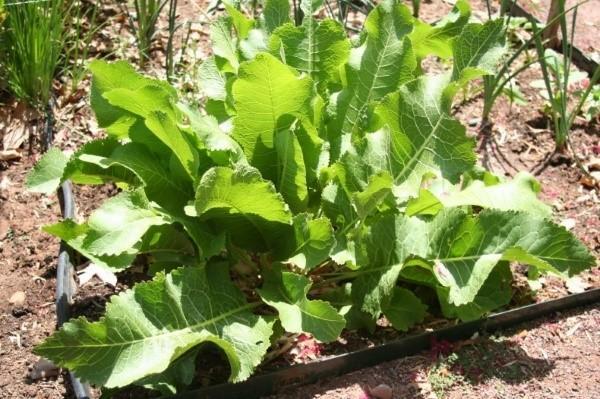Growing horseradish as a cultivated plant: how to prevent it from becoming a weed
 Horseradish is not just a perennial, but a plant with a very powerful and developed rhizome, so growing horseradish requires certain skills. The root can go deep into the soil up to 2 m, moreover, it has many dormant buds that wake up at any depth. Not surprisingly, if you leave horseradish to grow as he pleases, very soon it will fill the whole garden. At the same time, it will be difficult to collect a good harvest, because the overgrown roots become thin. To prevent this from happening, it is worth knowing how to properly plant horseradish and take care of it.
Horseradish is not just a perennial, but a plant with a very powerful and developed rhizome, so growing horseradish requires certain skills. The root can go deep into the soil up to 2 m, moreover, it has many dormant buds that wake up at any depth. Not surprisingly, if you leave horseradish to grow as he pleases, very soon it will fill the whole garden. At the same time, it will be difficult to collect a good harvest, because the overgrown roots become thin. To prevent this from happening, it is worth knowing how to properly plant horseradish and take care of it.
Tricks of planting horseradish in the garden
Regarding the landing site, there will be no problems here. Horseradish can grow literally everywhere, both in the sun and in the shade. But the soil should be fertile, with a deep arable layer.
In clay soil, the root branches strongly, hardens and acquires a bitter taste. On sandy ground, the roots lose their juiciness.
Most often, horseradish is planted with rhizome cuttings from its lateral parts. They should be up to 20 cm long and about 12 mm in diameter. You need to harvest planting material in the fall, during the harvest. They are stored in the basement, in a box, sprinkled with sand or ordinary earth.
Preparing cuttings for planting in the ground
In the spring, two weeks before planting, root cuttings should be taken out to a warm place to wake up dormant buds.
But this is only the beginning of the preparation:
- The strips must be laid out in a row and the middle of the shanks must be covered with dark material. The sun's rays should only hit the tips of the cuttings. Thus, horseradish will not be able to release many lateral roots, which will then be too thin.
- Before planting, you need to "blind" the horseradish. If buds nevertheless appear on the central part of the cuttings, which has been covered, they should be removed.
From the practice of gardeners, the best way to plant horseradish is to limit the space so that the bush cannot grow and "go for a walk around the site." You can plant horseradish in barrels or buckets, they will not let the roots go to the sides. In the fall, all that remains is to pull out the bucket and remove the plants with roots.
Growing horseradish: features of plant care
It is recommended to grow horseradish in one place no more than 5 years. This is a very frost-hardy crop, but you shouldn't rush to planting in spring. Young bushes may not tolerate frost if planted early. The optimal planting time is the end of April.
A powerful root system will help horseradish survive when there is a lack of moisture. However, in dry conditions, it is better to sometimes water the bushes so that the roots grow juicy. And so that they remain even and smooth, it is advisable to bring it under digging before planting humus... This will be enough and horseradish does not need further feeding.
The main reason that horseradish runs wild and spreads over the site is non-compliance with the rules of cultivation. The most important of them: the horseradish rhizome must be dug out annually, maximum - every two years. If horseradish grows in one place for a long time, the roots go deep, become thinner and begin to branch. As soon as the leaves began to turn yellow, it means it's time to start harvesting. Horseradish is dug up with a pitchfork, the leaves are cut off and the side roots are cut off - they will serve for reproduction. The central thick rhizome is used for food.